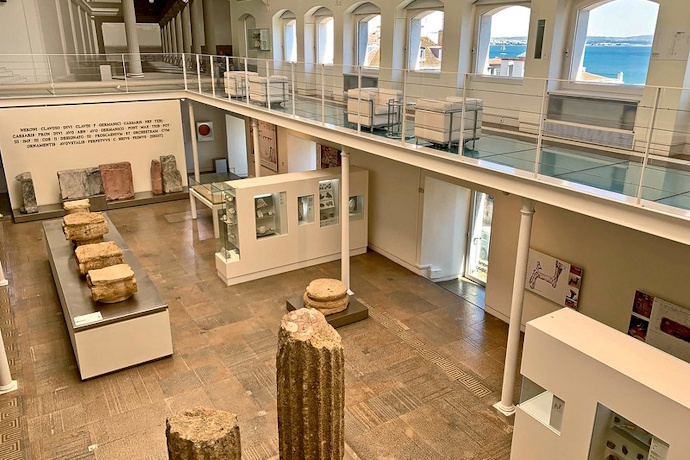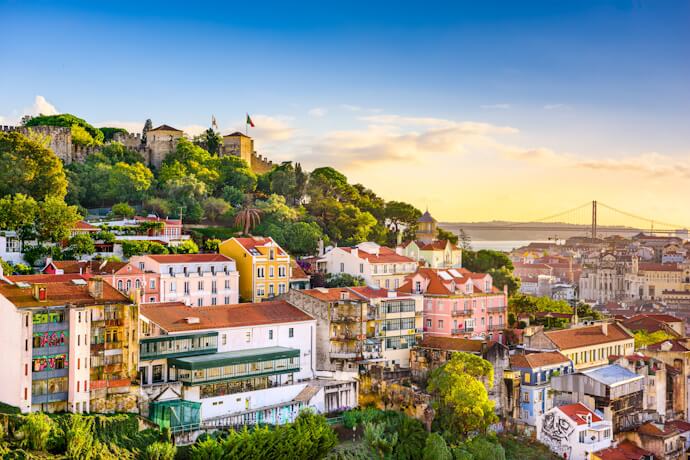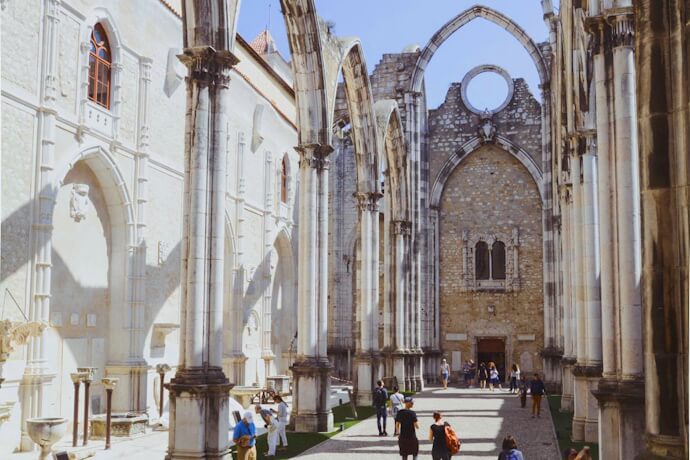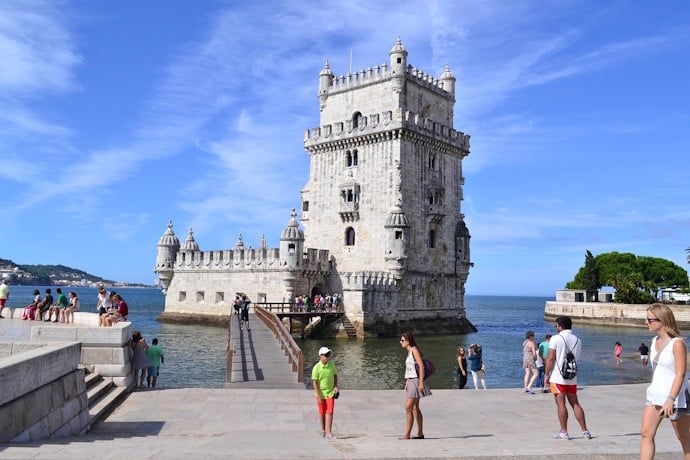What if you could explore an entire timeline simply by strolling through a single city? In Lisbon, history doesn’t sit behind glass - it echoes in alleyways, towers in stone, and lingers in the scent of roasted chestnuts on ancient streets. This is a city where every corner whispers a different century and each neighborhood carries the soul of a past era.
Here, you can descend into Roman ruins beneath your feet, trace Moorish footprints through tangled lanes, and stand in the shadow of Gothic grandeur. Baroque churches gleam beside Enlightenment squares, while Belle Époque cafés serve espresso in rooms once filled with poets and revolutionaries. And just when you think the past is all behind you, modern marvels rise along the riverfront, pointing toward Lisbon’s ever-evolving future.
So, lace up your most curious shoes, and discover Lisbon across the ages!
1. Tracing Lisbon’s Roman Footsteps
Your journey through time begins in "Olisipo", the Roman name for Lisbon, where cobbled streets echo with the footsteps of senators and citizens in togas. Tucked behind the modern façades of Alfama, the Roman Theater Museum invites you to uncover the city’s earliest urban heartbeat. Stand in the quiet curve of its ancient stone seating and picture the lively performances that once took place here - comedies, tragedies, and political satire staged under the open sky.
But Lisbon’s Roman past goes beyond the surface. Beneath the bustling Rua da Prata, hidden from daily view, lie the Galerias Romanas - a mysterious network of underground chambers and corridors. These Roman Galleries are a rare glimpse into the city’s substructure, usually sealed off from the world except for a few days each September, when lucky visitors descend into the dimly lit passageways. Lisbon’s Roman roots are often hidden in plain sight, but for those who know where to look, the past is always just beneath your feet!
2. The Moorish Period & Early Middle Ages
The year is 714. Lisbon, now known as “al-Ushbuna”, flourishes under Moorish rule. As you climb the steep hill toward São Jorge Castle, the air grows stiller, as if time itself is holding its breath. This ancient fortress, once a Moorish citadel, still watches over the city from its commanding perch. Step through its battlements and walk along the ramparts where sentinels once kept watch over a skyline pierced by minarets.
Descend into Alfama once again. This neighborhood, shaped by the Moors, retains a labyrinthine layout designed to confuse invaders and shade its residents from the summer heat. Here, you will lose yourself in narrow alleys, arched doorways, and hidden courtyards. The scent of grilled sardines mingles with the distant echo of fado, but beneath the surface, the soul of the Moorish medina lingers.
3. The Medieval Era
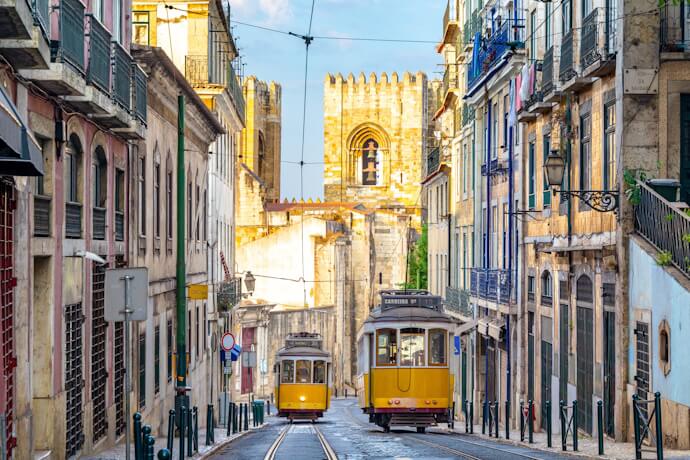
It is now the 12th century, and Lisbon is a Christian stronghold reborn through conquest. In 1147, King Afonso Henriques and his crusader army take the city, and rising from the ruins of a former mosque is a powerful new symbol: the Sé de Lisboa. Lisbon Cathedral stands like a fortress - thick Romanesque walls, crenellated towers, and an air of unshakable purpose. Built for both defense and devotion, it marks the city’s spiritual and political transformation.
Descend into the cloisters and you will find layers of history beneath your feet - traces of Roman roads and Moorish foundations. In this quiet, sacred place, the weight of centuries gathers around you. You are not just visiting Lisbon’s medieval past, you are experiencing the foundation of the city as it stands today.
4. Lisbon’s Gothic Reverie
The 14th century ushers in a new rhythm for Lisbon, one of devotion, artistry, and soaring ambition. At the heart of this Gothic era stands the Carmo Convent, once a magnificent church, now a haunting ruin.
Built in 1389 by national hero Nuno Álvares Pereira, the convent was a masterpiece of pointed arches and ribbed vaults. But after the 1755 earthquake, its roof vanished, leaving only sky above. The Carmo Ruins are a place where time seems suspended. The wind stirs the dust, and sunlight fills what was once illuminated by stained glass. This is Lisbon’s Gothic grandeur, frozen in time - a quiet reminder of both its strength and fragility.
5. The Age of Discoveries
The wind shifts, sails rise… and suddenly, you are in 15th-century Lisbon, a city brimming with the spirit of discovery. This is the dawn of the Age of Discoveries, when Lisbon stood at the edge of the known world, launching ships and dreams into the vast unknown.
Your vessel is Belém, the ceremonial gateway to the seas. From here, explorers like Vasco da Gama once departed, and the Belém Tower still stands as a stone sentinel - fortress, farewell point, and enduring symbol of adventure. Nearby, the Jerónimos Monastery dazzles with its Manueline architecture, carved with ropes, sea monsters, and divine ambition. Built to honor the voyages, it embodies the era’s blend of faith, power, and exploration.
6. The Renaissance and Baroque Splendor
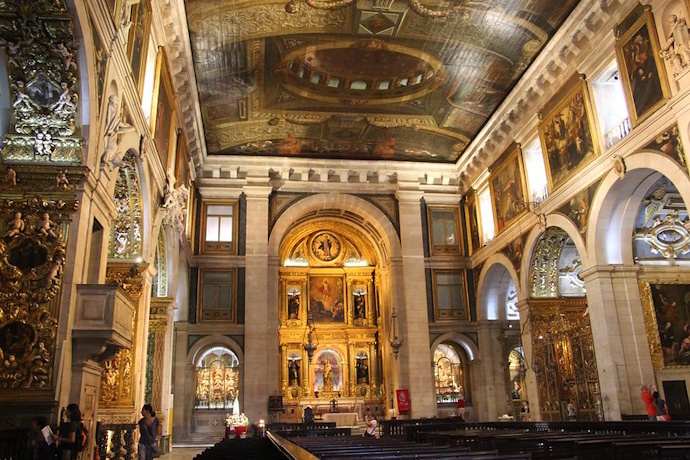
Step into the 16th and 17th centuries, when Lisbon shimmered with the wealth of the Age of Discovery. Gold flowed into the city and its churches became dazzling expressions of power and devotion. At the center of this era is São Roque Church, one of the first Jesuit churches in the world, built to inspire awe and reflect empire. Despite its modest exterior, inside it hides walls gleaming with Baroque opulence: gilded altars, painted ceilings, and marble chapels adorned with lapis lazuli and rare woods. The Chapel of St. John the Baptist, crafted in Rome and shipped to Lisbon piece by piece, is a masterpiece of craftsmanship and faith.
This is Lisbon turned inward - a city of explorers became a city of artists, thinkers, and theologians.
7. Pombaline Era & The Enlightenment
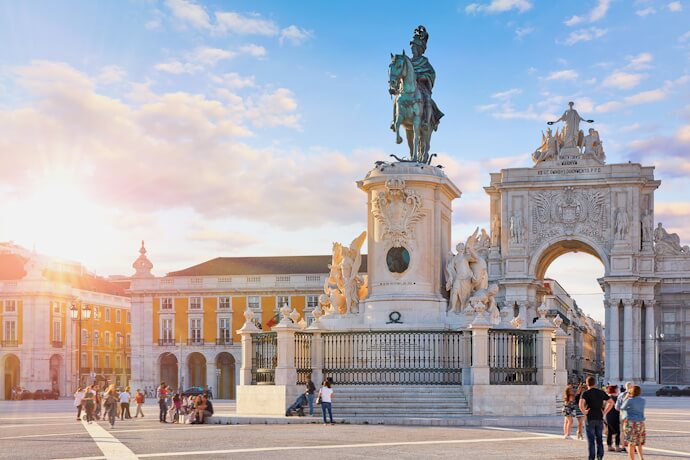
In 1755, Lisbon was shattered. Fire, flood and ruin sweep through the city, leaving its heart in ashes. But from this devastation emerges a revolutionary vision - modern, rational, and resilient. Welcome to the Baixa district, Lisbon’s Enlightenment masterpiece. Under the bold leadership of the Marquis of Pombal, the city’s old medieval maze is swept aside in favor of straight avenues, grand squares, and earthquake-resistant buildings. Walk along Rua Augusta, where arcaded shops and cafés line the broad boulevard. At its southern end stands the arch, a symbol of rebirth.
The Commerce Square opens like a grand welcome to the Tagus River. Once the site of the royal palace, it is now a civic stage, framed by classical arcades and crowned with a statue of King José I on horseback. This is Lisbon’s Enlightenment chapter, a moment when the city reinvented itself with courage and enduring grace.
8. Belle Époque to Art Deco
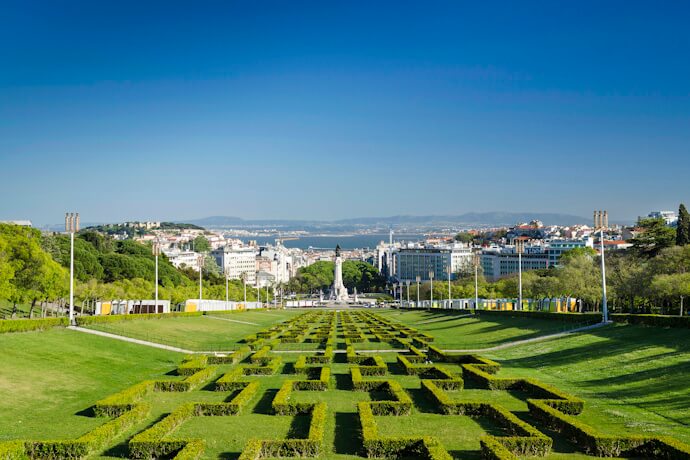
As the 19th century turns into the 20th, Lisbon embraces a new era of elegance and cosmopolitan charm. From Eduardo VII Park, grand avenues stretch outward, cafés buzz with artists and thinkers, and the city becomes a meeting point between tradition and modernity.
Avenida da Liberdade, with its tree-lined boulevards and refined architecture, becomes the symbol of aristocratic life and urban sophistication. It is a place to stroll, linger at café terraces, and watch the city evolve in style and spirit. Nearby, the Rossio Train Station, with its ornate arches and romantic flair, bridges Portugal’s maritime past with the speed of the industrial age. For a true taste of Lisbon’s cultural heartbeat, step into A Brasileira. This iconic café, adorned with early 20th-century flair, was once the haunt of poets and intellectuals. Even today, it invites you to slow down, sip a coffee and soak in the timeless atmosphere.
9. Modern & Contemporary Lisbon
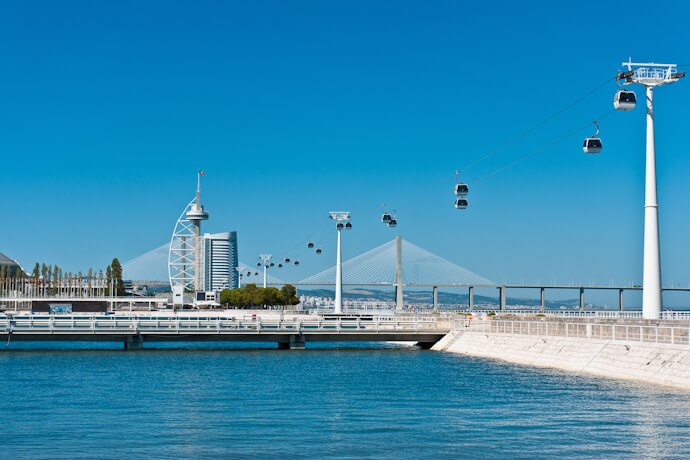
In Parque das Nações, Lisbon steps boldly into the future. Created for the World Exposition in 1998, this riverside district reimagined a once-industrial zone into a hub of innovation, leisure and cutting-edge design. Here, sleek architecture replaces cobbled streets and the city’s maritime spirit finds a modern expression. The Oceanário de Lisboa, one of Europe’s largest aquariums, celebrates the wonders of the sea through a lens of sustainability and science. Nearby, the Vasco da Gama Bridge arcs across the Tagus with elegant force, connecting Lisbon to tomorrow. With wide boulevards, public art and the futuristic Oriente Station, this neighborhood seems to always be in motion!
A City Shaped by Centuries!
We believe Lisbon is more than a mere destination. It is a city you travel through, era by era. From Roman stones to Moorish ramparts, Gothic arches to Baroque chapels, Belle Époque cafés to riverside marvels of modern design, each district and monument is a portal into another time. Wander its layered streets on foot, hop aboard an old yellow tram, or join a guided walk that breathes life into every cobblestone and square. With TourTailors by your side, you will experience its history firsthand with a custom-made itinerary crafted to take you deeper into the soul of the city. Let the rhythm of centuries guide you!


